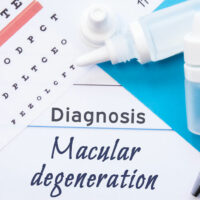Early warning signs of arthritis one shouldn’t ignore

Arthritis is a prevalent and often debilitating condition affecting millions worldwide. Early diagnosis and intervention are crucial in managing it effectively. One way to identify the disorder is to learn about its warning signs. This comprehensive guide not only lists the symptoms of arthritis but also discusses its types, management, and other vital factors. The information can help patients take the right steps toward recovery and overall well-being in the long run.
Understanding arthritis
Arthritis is not a single disease but a term encompassing over a hundred types of joint disorders, with osteoarthritis and rheumatoid arthritis being the most prevalent. These conditions share common symptoms, such as joint pain, stiffness, and inflammation, but have distinct causes and treatments. While arthritis can affect people of all ages, it is more commonly associated with aging.
Common early warning signs
The following are a few early warning signs of arthritis that demand expert attention:
- Joint pain
Persistent joint pain is often the first sign of arthritis. It may start as mild discomfort but can progress to severe pain over time. The pain is typically worse with movement and improves with rest. - Joint stiffness
Early in the disease, individuals with arthritis may experience stiffness in the affected joint, especially in the morning or after prolonged periods of inactivity. This stiffness can last for several minutes to hours. - Swelling and inflammation
The condition often leads to joint inflammation, causing visible swelling and warmth around the affected area. The skin over the joint may appear red and feel tender to the touch. - Reduced range of motion
As arthritis progresses, joint flexibility decreases. People may find it challenging to move the affected joint through its full range of motion. - Fatigue
Arthritis-related pain and inflammation can lead to fatigue, affecting a person’s energy levels and overall well-being. - Morning stiffness
Many with arthritis experience morning stiffness lasting at least 30 minutes or longer. This stiffness is often a hallmark of inflammatory arthritis, such as rheumatoid arthritis. - Joint warmth
Warmth in the joints can indicate inflammation and is a common early symptom in inflammatory types of arthritis. - Tenderness
Joint tenderness or sensitivity to touch can occur, particularly during flare-ups. - Weakness
Muscles around the affected joint may weaken, contributing to pain and reduced joint function.
Types of arthritis and their early symptoms
While the early warning signs mentioned above are common across various types of arthritis, it’s essential to note that each type may have unique characteristics. Here are some specific examples:
- Osteoarthritis (OA)
OA is the most common form of arthritis, primarily affecting the joints’ cartilage. Early signs may include joint pain, stiffness, and reduced range of motion, typically involving weight-bearing joints like the knees, hips, and spine. Osteoarthritis pain often worsens with activity. - Rheumatoid arthritis (RA)
RA is an autoimmune disease characterized by joint inflammation and damage. Early symptoms include joint pain, morning stiffness, swelling, and warmth in the joints. RA often affects multiple joints simultaneously, including the small joints of the hands and feet. - Psoriatic arthritis (PsA)
PsA is associated with the skin condition psoriasis. Early symptoms may include joint pain, swelling, stiffness, and skin changes like redness and scaling. PsA can affect any joint, including the fingers and toes. - Ankylosing spondylitis (AS)
AS primarily affects the spine and sacroiliac joints. Early signs include lower back pain and stiffness that often worsen in the morning or after rest. AS can also affect other joints and lead to chest pain and breathing difficulties in severe cases. - Gout
Gout is a type of arthritis caused by the buildup of uric acid crystals in the joints. Early symptoms involve sudden and severe joint pain, often affecting the big toe. Specific foods and unhealthy habits can trigger gout attacks. - Lupus arthritis
In systemic lupus erythematosus (SLE), joint pain and swelling are common early symptoms. Lupus arthritis typically affects the small joints, such as the fingers and wrists. It is often accompanied by other systemic symptoms like fatigue and skin rashes.
Individuals who experience the early warning signs mentioned above should seek health evaluation, especially if the discomfort persists or worsens over time. Early detection and diagnosis are essential for implementing an appropriate treatment plan and preventing potential joint damage and disability.
The importance of early detection
Early detection of arthritis is essential for several reasons, such as:
- Pain management
Timely intervention can alleviate pain and discomfort associated with arthritis. Treatments, physical therapy, and lifestyle modifications are more useful when started early. - Prevention of joint damage
Some types of arthritis, like rheumatoid arthritis, can lead to joint damage and deformities if left untreated. Early intervention can help prevent or slow down this process. - Improved quality of life
Arthritis can significantly impact a person’s daily activities, work, and overall quality of life. Early treatment can minimize these disruptions. - Delaying progression
Identifying arthritis in its early stages can help control its progression and reduce long-term disability.
Management
Several treatments can be administered to help manage the symptoms of the disease. Two examples include heat and cold therapy and joint repair, replacement, or fusion surgery. Lifestyle changes can also help patients lead an active life. One can exercise under guidance and use assistive devices like shoe inserts, walkers, raised toilet seats, and canes. Yoga, massage, and acupuncture are other alternative therapies that can be followed under expert supervision.
Recognizing the early warning signs of arthritis is crucial for timely intervention and effective management. Arthritis encompasses various types, each with its unique characteristics, but common symptoms include joint pain, stiffness, swelling, and reduced range of motion. Prompt attention and a personalized treatment plan can significantly improve the quality of life for individuals living with arthritis and help mitigate the progression of the disease. Consult a healthcare professional for a proper evaluation, diagnosis, and treatment if these symptoms are familiar.



